#idunn deity
Text
Grim's Subtle Worship Ideas for Idunna 🍎🍏
Basically my entry to @chaos-bites 's Subtle Worship series for Norse Gods
I made this in hopes of taking some of the stress of it from Stag's shoulders (and I got the go-ahead too)
eat in-season produce
take your medication safely and on time
learn more about how fruits and vegetables grow
grow a plant, ideally one that produces a fruit or vegetable, but a low effort one like a succulent works too
eat mindfully
partake in a creative hobby (think knitting, drawing, etc) that brings you joy
learn your limits and honor them
do a chore that desperately needs doing to improve your quality of life (dust with a mask if you have a dust allergy, clean out your fridge so you don't get sick from spoiled food, etc)
support environment preservation and restoration groups
clean up litter
be mindful of what you buy and throw away
exercise! doesn’t have to be a full complicated routine, just something that gets you moving and enjoy - and if you can’t enjoy it, something you can at least bear
spend some time outside - and put on sunscreen while you’re at it!
take care of yourself: shower if you haven’t in a while, brush your teeth if you haven’t today, and so forth
learn more about your local ecosystem
share an apple with her
start your own fruit and/or vegetable garden and give part of the harvest to loved ones
contribute to a community garden
make a homemade apple pie and give her a slice
give her an glass of water and ice to refresh her after a long day in the orchard
help a loved one with yardwork
I'll probably add onto this list later - I know I haven't gotten everything she'd like. Or, heck, y'all can add onto it too! I'm curious to see what else y'all would offer her.
#oh fuck here i go to think about which spellings people prefer#idun deity#iduna deity#idunna deity#deity work#deity worship#idunn deity#imbuer of immortality#idun#iduna#idunna#idunn#paganblr#offerings#grim mutterings#norse paganism
40 notes
·
View notes
Text
Prayer to Idunn
Bearer of Spring,
Guardian of the Youthful Apples,
Partner to Bragi,
Bring the Song of the Season.
Let there be Light,
Chase away the snow.
Let the rabbits run,
The seeds start to grow.
Oh, Blesséd Idunn,
Who walks the Garden of Immortality,
Who was stolen by Thiazzi,
Good luck grows on trees for Thee.

#jackalopewitch#prayer to Idunn#idunn#idunn deity#norse heathen#witchblr#witchcraft#norse paganism#witch blog#norse witch#pagan blog#norse pagan#norse pantheon
87 notes
·
View notes
Text

Idun and Bragi, by artist smolenskaya on Deviantart.
#norse mythology#Idunn#Bragi#art#heathenry#norse paganism#norse gods#spirituality#paganism#deity work#deities#polytheism#norse polytheism
146 notes
·
View notes
Text
Looking for blogs to follow!
Witchcraft
Norse paganism
Freyja devotees
Followers of Skadi or Idunn
Spells
Glamour magic
Green magic
Astrology
Like or reblog and I'll check you out!
#witchcraft#witchblr#norse paganism#norse pagan witch#freyja#freyja devotee#skadi deity#skadi devotee#idunn devoteem#skadi#idunn#spells#glamour magic#green magic#astrology
58 notes
·
View notes
Text
"Asynjur goddesses redesigns!"
In order: Sif, Idunn, Gerdr, Sigyn <3
I am very proud with the color schemes I chose and the different body types!
By the way I tried making Gerdr's outfit more gender neutral as I headcannon they're enby (AFAB)


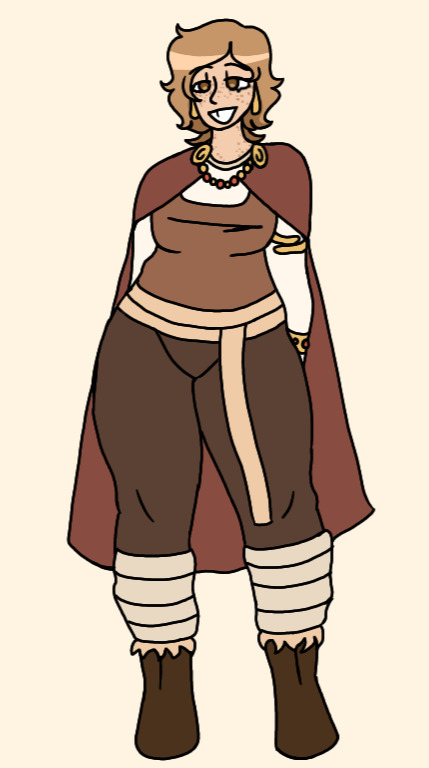

#norse mythology#norse deities#norse pantheon#aesir#norse goddesses#sigyn#gerdr#Sif#Idunn#idun#redesigns#designs#nonbinary
9 notes
·
View notes
Text
March 2024 witch guide
Full moon: March 25th
New moon: March 10th
Sabbats: Ostara-March 19th
March Worm Moon
Known as: Crow Moon, Eagle Moon, Goose Moon, Hrethmonath, Lenting moon, Lentzinmanoth, Moon of Snowblind, Moon of Winds, Plow Moon, Sap Moon, Seed Moon, Sore Eyes Moon, Storm Moon, Sugar Moon & Wind Strong Moon
Element: Water
Zodiac: Pisces & Aries
Nature spirits: Air & water spirits & Mer-people
Deities: Artemis, Astarte, Athena, Cybele, Isis, Luna & Minerva
Animals: Boar, cougar & hedgehog
Birds: Sea crow & sea eagle
Trees: Alder, dogwood & honeysuckle
Herbs: Apple blossom, broom, high John root, Irish moss, pennyroyal, wood betony & yellow dock
Flowers: Daffodil, jonquil & violet
Scents: Apple blossom & honeysuckle
Stones: Aquamarine, bloodstone, jasper, opal &topaz
Colors: Pale-green, red, violet, yellow & white
Energy: Balance, beginnings, dream work, energy breaking into the open, exploring, fertility, inner development, karma, prosperity, spirituality, success & truth seeking
For many years, it was thought that the name "Worm Moon" referred to the earthworms that appear as the soil warms in spring. This invites robins and other birds to feed—a true sign of spring.
However, more research revealed another explanation. In the 1760s, Captain Jonathan Carver visited the Naudowessie (Dakota) and other Native American tribes and wrote that the name Worm Moon refers to a different sort of “worm”—beetle larvae—which begin to emerge from the thawing bark of trees and other winter hideouts at this time.
March’s full Moon often plays a role in religion, specifically in Christianity, this Moon is known as the Lenten Moon if it is the last full Moon of the winter season (i.e., if it occurs before the spring equinox) or as the Paschal Full Moon if it is the first full Moon of spring (i.e., if it occurs after the spring equinox).
Ostara
Known as: Alban Eiler, Lady Day & Spring/Vernal equinox
Season: Spring
Symbols: 8-spoked wheel, butterflies, chicks, decorated baskets, eggs, feathers, jellybeans, lambs, rabbits, seeds, shamrocks, spring flowers & sunwheels
Colors: Green, indigo, light blue, pastels, pink, red & yellow
Oils/Incense: African violet, florals, ginger, jasmine, lotus, magnolia, rose, sage & strawberry
Animals: Cormorant, hare, hawk, rabbit, sheep, sparrow & swallow
Mythical: Dragon & Unicorn
Stones: Amethyst, aquamarine, bloodstone, moonstone, red jasper & rose quartz
Food: Dairy foods, eggs(hard boiled), fruits, honey, honey cakes, leafy greens, vegetables, pine nuts, pumpkin, sunflower seeds, sprouts & waffles
Herbs/Plants: Acorn, cinquefoil, dogwood, ginger, Irish moss, olive, strawberry & woodruff
Flowers: Celandine, crocus, daffodil, dandelion, Easter lily, jasmine gorse, honeysuckle, hyssop, iris, jonquil, linden, narcissus, peony, snowdrop, tansy & violet
Goddesses: Aphrodite, Ariadne, Artemis, Athena, Coatlicue, Cybele,Demeter, Diana, Eos, Eostre, Flora, Gaia, Hera, Idunn, Iris, Ishtar, Juno, Minerva, Persephone, Venus & Vesta
Gods: Adonis, Attis, Celi, Cernunnos, Coel, Dagda, Dalon ap Landu, Dumuzi, Green Man, Lord of the Greenwood, Mithras, Odin, Osiris, Ovis & Pan
Issues, Intentions & Powers: Agriculture, balance, beauty, fertility, growth, life, love & rebirth/renewal
Spellwork: Air magick, fertility, new beginnings & water magick
Activities:
• Go on a hike/walk & look for signs of spring
• Add Ostara symbols to decorate your altar space
• Plant vegetable &/or flower seedlings
• Decorate eggs with bright colors
• Set your intentions for the weeks/months ahead
• Start a new class or hobby
• Create eggshell candles
• Make plans & new routines for the future
• Participate in rituals & ceremonies that connect you with energy & the life force of nature
• Have a feast with your friends &/family with sprouts & leafy greens
• Bake hot cross buns or lavender/lemon flavored treats
• Clean & de-clutter your home
• Try a re-birthing/ renewing ritual
• Bring fresh flowers or plants into into the home
• Host a spring & floral themed tea party
• Make egg based food dishes & desserts
This holiday marks the Spring Equinox, which happens before March 19-22. It is the second of three spring celebrations (the midpoint between Imbolc and Beltane) during which light & darkness are again in balance, with light on the rise. It is a time of new beginnings & of life emerging further from the grips of winter.
There is much debate regarding the origins of Ostara due to the lack of primary sources about this sabbat. One theory is the name of Ostara came from the Anglo-Saxon goddess Eostre. Another theory is that Eostre is more of a localized goddess in Kent County, England. Despite the questions of her origins, Eostre is associated with modern-day Pagan traditions of Ostara.
There is no evidence that the ancient Greeks or Romans celebrated Ostara, although they did celebrate their own spring festivals, such as the Roman festival of Floralia & the Greek festival of Anthesteria. It was a time to honor the returning sun, fertility & rebirth.
Related festivals:
• Nowruz- March 19th
Nowruz marks the first day of spring & renewal of nature. It is celebrated on the day of the astronomical vernal equinox. It is also celebrated as the beginning of the new year by people all around the world for over 3,000 years in the Balkans, the Black Sea Basin, the Caucasus, Central Asia, the Middle East & other regions.
It promotes values of peace & solidarity between generations & within families as well as reconciliation & neighbourliness. Nowruz plays a significant role in strengthening the ties among peoples based on mutual respect & the ideals of peace and good neighbourliness.
Traditional customs of Nowruz include fire & water, ritual dances, gift exchanges, reciting poetry, symbolic objects & more; these customs differ between the diverse peoples & countries that celebrate the festival.
• Holi- March 25th
Holi is a popular & significant Hindu festival celebrated as the The festival of colors, Love &Spring. It commemorates eternal and divine love of the deities Radha & Krishna. Additionally, the day signifies the triumph of good over evil, as it celebratess the victory of Vishnu as Narasimha over Hiranyakashipu. Holi originated & is predominantly celebrated in the Indian subcontinent, but has also spread to other regions of Asia & parts of the Western world through the Indian diaspora.
Holi also celebrates the arrival of Spring in India, the end of winter & the blossoming of love. It is also an invocation for a good spring harvest season. It lasts for a night & a day, starting on the evening of the Purnima (full moon day) falling on the Hindu calendar month of Phalguna, which falls around the middle of March in the Gregorian calendar.
• Easter- March 31st
also called Pascha or Resurrection Sunday is a Christian festival & cultural holiday commemorating the resurrection of Jesus from the dead, described in the New Testament as having occurred on the third day of his burial following his crucifixion by the Romans at Calvary c. 30 AD. It is the culmination of the��Passion of Jesus Christ, preceded by Lent (or Great Lent), a 40-day period of fasting, prayer, & penance.
Easter traditions vary across the Christian world & include sunrise services or late-night vigils, exclamations & exchanges of Paschal greetings, flowering the cross & the decoration and the communal breaking of Easter eggs (a symbol of the empty tomb) among many others. The Easter lily is a symbol of the resurrection in Western Christianity traditionally decorates the chancel area of churches on this day & for the rest of Eastertide. Additional customs that have become associated with Easter & are observed by both Christians & some non-Christians include Easter parades, communal dancing, the Easter Bunny & egg hunting.
Other Celebrations:
• Festival of Luna- March 31st
Is a feast day honoring the Goddess Luna who is seen as the divine embodiment of the Moon.
The Temple of Luna was a temple on the Aventine Hill in Rome, dedicated to Luna, the moon goddess. Its dedication was celebrated on March 31st, thus the celebration.
According to Tacitus, it was built by king Servius Tullius. However, the first confirmed reference to a temple to Luna dates to 182 BC & refers to one of its doors being knocked off its posts by a miraculous blast of air & shot into the back of the Temple of Ceres. That account probably places the temple at the north end of the hill, just above porta Trigemina. The temple was struck by lightning around the time of the death of Cinna, as was the temple of Ceres. After the destruction of Corinth, Lucius Mummius Achaicus dedicated some of his spoils from the city to this temple. It was destroyed in the Great Fire of Rome in 64 AD & not rebuilt.
Sources:
Farmersalmanac .com
Llewellyn's Complete Book of Correspondences by Sandra Kines
Wikipedia
A Witch's Book of Correspondences by Viktorija Briggs
Encyclopedia britannica
Llewellyn 2024 magical almanac Practical magic for everyday living
#correspondences#sabbat#wheel of the year#ostara#Worm Moon#witch community#witchblr#wiccablr#paganblr#witchcraft#witches of tumblr#tumblr witch community#tumblr witches#full moon#witch guide#witch tips#traditional witchcraft#spellbook#grimoire#book of shadows#beginner witch#baby witch#full moon magick#witchcore#GreenWitchcrafts#pagan#wicca#witch#witchy tumblr#spells
236 notes
·
View notes
Text
A (norse pagan) prayer I like to recite from time to time.
(written by me, feel free to use it too/adapt to your own practice. 🤍) (maybe contains upg? i wrote this based on the concepts and "vibes", roughly put, that i get from each Deity.)
May Odin teach us,
May Thor keep us,
May Tyr guide us.
May Heimdall show us the truth.
May Frigg love us,
May Freya show us how to love,
May Skadi strengthen us,
May Idunn keep us young, at all ages.
May Freyr show us peace,
May Njord lead us to prosperity,
May Baldur show us beauty,
May Bragi open our ears to the music.
May Sigyn teach us forgiveness,
May Loki show us our fire,
May Fenrir bring justice.
May Hel bring the necessary ends,
and when we reach our own,
May she welcome us in.
#english isn't my first language so let me know if something's off 🤍#norse gods#norse pantheon#heathen#heathenry#pagan prayer#norse paganism#norse pagan#{ prayer }
292 notes
·
View notes
Text
Day 24 - Idun (Request)
Race: Megami
Alignment: Light-Neutral
April 23rd, 2024
accidentally spoiled this one, oops.
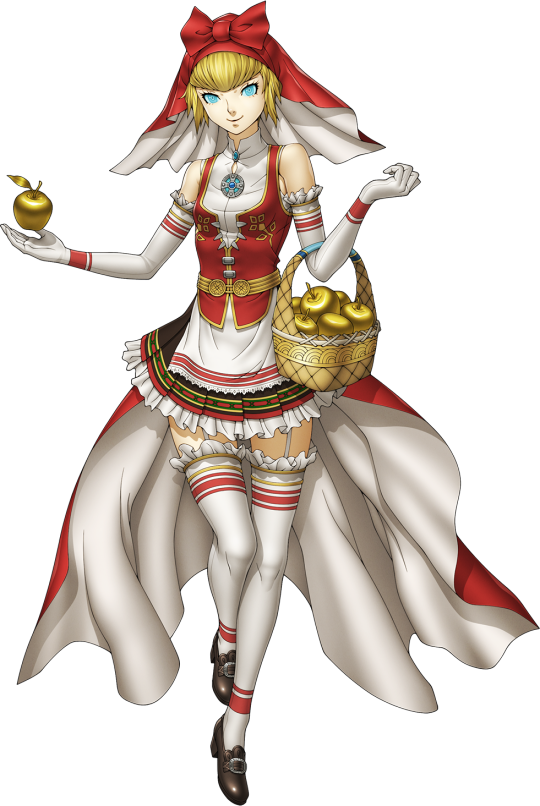
Norse mythology, as any amateur theologian would likely know, is a bizarre beast to look into- a winding complex of bastardized tales and Christian retcons that makes even some of its most iconic gods appear scantly and obscurely in its stories. However, our demon of the day is one of the most recurring goddesses in the entire pantheon- the goddess of apples and youth, Idun.
Well, maybe that's a bit of an overstatement, but a Norse god appearing in more stories than one in the Prose Edda is an accomplishment in-and-of-itself. Idun, also known as Idunn, Iduna, or Iðunn, is the ancient Norse deity who resides over apples, spring, youth, and rejuvenation- she was likely well worshipped in her place, representing such pleasant thoughts (outside of spring due to the scourge of pollen, but let's not get into that) and ideas. Her name even seems to be based upon ideas of kindness and healthiness, as it's based upon the old Norse words ið, meaning "again," and unna, meaning "to love."
All of this, alongside her association with one of the best fruits (objectively), apples, seems to paint her in the light of being a goddess that the common people looked up to and worshipped for a nice, peaceful life. Idun is also the wife of Bragi, the god of poetry, something that adds on to this lovingly creative persona- she seemed to have been a lesser goddess, yet one still revered and loved for her role in cultivating a beautiful year with fantastic food. Even today, in some pagan circles, she is still worshipped, as she was in the past as well, a goddess representing good spring and fortune.
Idun's most famous myth comes about with those same apples she treasures so dearly- they weren't any old apples, you see, as the ones she specifically grew were apples of immortality. These apples were relied upon by the pantheon to remain young and spritely (likely leading to her title as the goddess of youth given her role in cultivating those apples) and she protected the orchard where they were grown diligently. However, a jötunn by the name of Þjazi forced Loki's hand, getting him to drag Idun away from her orchard only to kidnap her. As a consequence of her absence, the gods soon began to grow old and frail, and finding nobody else responsible, they found the blame to be on the trickster god present.
The gods weren't mad with him specifically, though- they knew that Loki wasn't that petty and mean to steal the immortal apples without reason. As a result, in an effort to make him right his wrongs, they sent him out to retrieve Idun from the claws of the jötunn, Loki adopting the form of a falcon and chasing after the giant in great pursuit. After a while of searching, he found the (likely terrified, or maybe even annoyed) Idun, who turned into a single small nut to let him escape with her untouched. Shortly after Loki makes his daring escape, the giant comes back to find his captive goddess gone with the wind, and chases after Loki in hot pursuit in the form of a massive eagle. However, the gods devised a plan to stop this rampaging jötunn, causing the eagle to run right into a then-lit pyre and setting him ablaze. With Idun returned to them, they went back to eating from the immortal apple stock, and all lived happily ever after. Until Ragnarok stuff happens, but let's not worry about that!
While Idun does fill a role as an archetypal 'damsel in distress,' her main story does show how important she actually is to the Norse pantheon; without her, they wouldn't be able to live. As a result, while a minor deity, she has a major role in the pantheon- one that is reflected perfectly in her role in SMT V.
In SMT V, Idun's only current appearance, she appears as a late-game healer and support demon with a whole sidequest attached- one that I can't recant here due to not playing V, but it seems fun. Design-wise, she bears a striking resemblance to Little Red Riding Hood (as well as Aigis for some reason), something which feels obvious given her role as the owner of the divine orchard with a wicker basket holding her magical apples, drawing clear parallels with the apples that Red Riding Hood delivers to her grandma.
She also tends to hit the griddy.
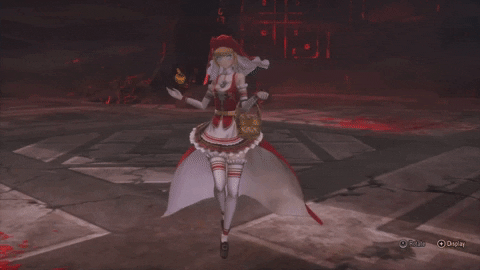
Why? Because it's cute!
Overall, this charmingly designed demon from one of the most famous mythologies out there gets an A in my book. The influence behind her design is clear, it's cute and effective, and it works given her folkloric prescedent.
18 notes
·
View notes
Photo

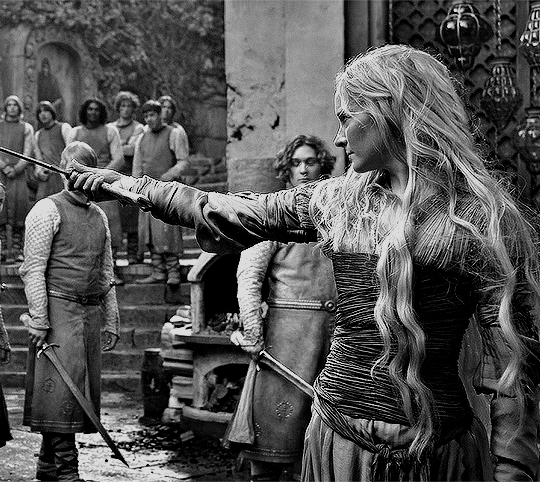
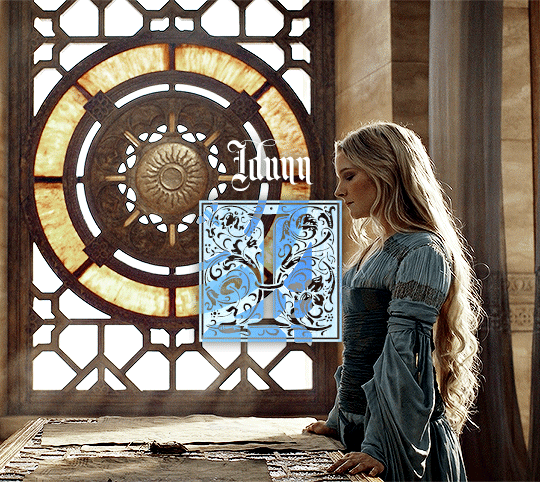




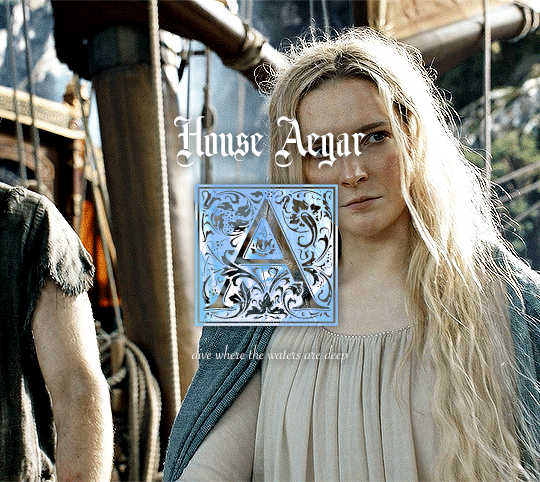

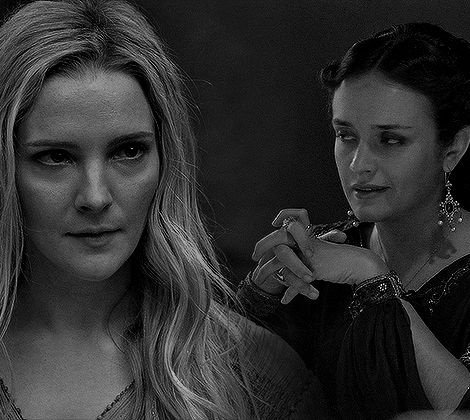
HOUSE AEGAR was infamous for several things — the rare pearls that came through the harbour, the swinging of silver-steel in the rush of battle and the great currents that swept majestic boats out to sea. It was said that those born into House Aegar embodied the same spirit of the sea deities that they idolised — stormy and temperamental yet lenient and easy-going.
Thus, the same could be said for the Lady Idunn of House Aegar — born under a full moon when the tides were high. She had spent a great deal of her childhood in King’s Landing — befriending both the Princess Rhaenyra Targaryen and the Lady Alicent Hightower. Sources often noted the strange close companionship of the later Queen Alicent and the Lady Idunn.
Later in life, she often played the role of ambassador between her island-home and King’s Landing - home of the ruling House Targaryen.
TAGLIST (ask to be added) 🐚 @hiddenqveendom
#hotd oc#allaboutocs#ocappreciation#fyeahhotdocs#fyeahgameofthronesocs#userimogen#ochub#creations: oc#she is wlw <3#oc: idunn#house of the dragon oc
233 notes
·
View notes
Text
Holidays Among the Godsring
Below is a list of some holidays The Godsring observes, including the time of year we celebrate and which deity/deities we honor during the ritual.
Spring Equinox (March) - Day
Liða (June) - Sunna
Bragifest (August) - Bragi
Hærfest (September moon) - Freyr, Idunn, Sif, and Thor
Fall Equinox (September) - Night/Nott
Winterfylleth (October moon) - Frigg/Freyja and Odin
Halloween (October 31) - The Ancestors and Hel
Thanksgiving (November 4) - Freyr
Mothersnight (December 23) - The Mothers/Disir
The Wild Hunt (December 30) - Odin
For each holiday our rituals tend to follow this general format:
We perform a hallowing of the space; invite our deities with invocations; read longer original prayers, stories, poems, and/or songs; give the deities physical or metaphorical offerings; do rounds of toasts; say a closing prayer; then take time to reflect on the ritual and catch up socially with one another.
Are there any on this list you observe? Let me know how you celebrate the holidays!
20 notes
·
View notes
Text
What are each Norse deity the “God/dess of,” you ask?
Thor - knocking Jotnar on the head with a hammer
Loki - “It’s just a prank, bro.” Famous last words
Freyja - Warriors 🐈 🐱 🐈⬛
Freyr - spent his life savings on a wife (originally wrote traded his sword for a wife)
Sif - hair extensions
Odin - Conspiracy theories -like did you start Ragnorok or
Hel - “I do not control the die.”
Njord - “I do not control the lobsters.” (unless he has a fishing rod)
Aegir - “I do control the lobsters.”
alternatively: Party down in Mostro Lounge
Ran - I do control the speed at which lobsters die.
alternatively: “I’ve only had this lost soul for a day and a half, but if anything happens to them, I’ll kill everybody in this room and then myself.”
Gerdr - thaw, I think
Skade - Artemis but snowy
Njordr + Skade - Norse equivalent of Lạc Long Quân + Âu Cơ
Ullr - more than > a Viking hobby
Baldr - Jesus??? Not confirmed
Tyr - lefty for (rest of my) life
Idunn - Minecraft golden apples
Bragi - poetry slams
Frigg - Almother
Heimdall - club bouncer
Gefjun - Danish island Sjælland
Sigyn - “I gotchu fam”
Eir - Why are there Cheetos in the first aid kit?
Mengloth - Apologize or else!
Fenrir - Clifford the Big Red Dog
Hugi - we must be swift
Logi - as a raging fire
Surtr - you ever noticed movies with a big black volcano 🌋 are filmed in Iceland?
#norse mythology#Norse deities#norse gods#norse goddesses#if I insulted any of you I am so sorry#this is supposed to be very lighthearted#my work#my writing#my stuff#sti speaks#Heathen jokes
13 notes
·
View notes
Text

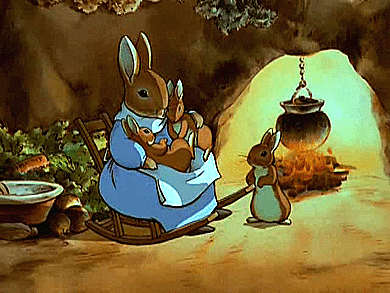
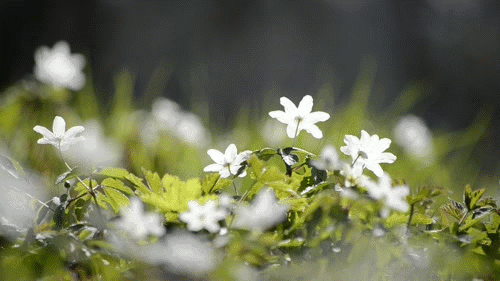
Three Gifs for Idunn
#jackalopewitch#idunn#idunn deity#norse pantheon#Norse mythology#witchblr#witchcraft#norse paganism#witch blog#norse witch#pagan blog#norse pagan
8 notes
·
View notes
Text
Iðunn may not have a powerful presence. She may not rattle your world when you invite her in. She will teach you her wisdom, bit by bit, and she will allow you to pick it, little by little, like flowers in a sunny field. Like these very flowers swaying with the wind, Iðunn seems gentle and light. Her voice rises barely above their quiet fluttering. But if you listen to it long enough, you’ll find that her voice will erupt ever livelier. First, as loud as birdsong, then, as a high tide crashing on the shore. Iðunn’s strength lies in her kindness, and her endlessly forgiving heart. Such matters are too often disregarded: forgiving others, forgiving oneself, and nurturing hope. These are the things that Iðunn treasures, and which she is most adept at teaching. Iðunn may not appear to have a powerful presence, so much is certain. But when you truly listen with your ears and heart to the sound of her featherlight voice, you may feel that she has shaken you down to your soul.
#paganism#devotional writing#norse paganism#norse gods#deities#spirituality#deity work#polytheism#heathenry#Idunn
122 notes
·
View notes
Text
Sif + Skadi=Marvel!Sif
Because I promised I'd elaborate on that last post. This is part 1/3.
Marvel’s Sif similarities to Sif are quite few and mostly based around Loki cutting her hair. Sif is very gender conforming in the original mythology, unlike her MCU counterpart.
The few similarities are:
1. Loki cuts her hair.
-In the myths, Sif has long blonde hair like wheat fields (she is a harvest goddess). Loki cuts it while she slept, bringing Thor’s wrath upon him. Under threat, Loki is forced to replace her hair and does so by procuring magic golden hair from the dwarves.
-In the comics, Sif was originally blonde. Loki cuts her hair for a variety of reasons/circumstances depending on the comic run/series. Loki is then forced to replace her hair, but he refuses to pay the dwarves. So to spite him, the dwarves curse the magical golden hair to turn permanently black upon placement. Dark hair is played as a tragedy that would have marred Sif’s beauty, and Thor is portrayed as such a good person to still be infatuated with Sif! (*ugh* thanks I hate it).
-In the MCU, according to the composer Natalie Holt (so take it with a grain of salt as it’s technically an “outside source”), Loki slept with Sif and then cut her hair as a prank. Her hair didn’t change colors and Loki did not replace it but Sif got her vengeance by kicking Loki in the crotch. Notice that Thor had no part in demanding restitution from Loki, unlike the other two occasions mentioned above.
2. Sif is important to Thor.
-In the myths, Sif is Thor’s wife. Thor threatens Loki to get them to replace Sif’s hair.
-In the comics, Sif is Thor’s childhood sweetheart and lover but not the endgame love interest. She’s also in his close group of warrior friends. Thor threatens Loki to replace Sif’s hair.
-In the MCU, she is one of Thor’s close friends. There seemed to be no romantic overtones. This is the one time Loki is not threatened into replacing her hair.
Brief overview on Skadi: Skadi is the Goddess of Winter, Vengeance, Hunting, and Skiing. Her origin is speculated to be associated with the Sámi people (Davidson, 1993). Skadi’s name is associated with “scathe” and “injury.” She is speculated to be associated with Loki’s punishment. There’s a theory she is associated with Ullr, another god of skiing and may be a female counterpart to him. Another theory states that she might have been a male deity at first (Davidson, 1993). Her father, Thiazi, threatened Loki into making an oath to get Idunn and her golden apples for him. The whole scheme resulted in Loki having to rescue Idunn, and Thiazi being killed by the Aesir upon her rescue by burning him with a massive bonfire as he chased Loki and Idunn. A furious Skadi seeks revenge upon the Aesir. The Aesir decide to give her some recompense for her father’s slaying which include (I)Thiazi’s eyes being yeeted into the sky and turned to stars. (II) Allowing her to pick a husband from amongst the Aesir (with stipulations ). (III) Skadi asks to be made to laugh. The last task falls to Loki, naturally.
Skadi's rather unusual in the following ways:
-Skadi is given an unusual amount of authority to placate her for Thiazi’s death despite being a Jotnar and a woman. A furious Skadi seeks revenge upon the Aesir, armored for battle. The Aesir decide to give her some recompense for her father’s slaying rather than just siccing Thor on her like they usually do (it's mentioned they didn't want to spill blood within Asgard, so I guess she got lucky?).
-One of the restitutions is that Skadi is allowed to pick a husband from the Aesir with stipulations. She wants Balder, the fairest of the Gods (who's already married). But, she can only select her potential husband by looking at their feet. She picks the nicest feet thinking they most be Balder's but they're actually the sea god Njord's sand-exfoliated feet from walking on the beach. They eventually divorce.
-Someone will make Skadi laugh. Loki was tasked with this and the way Loki accomplished this was through his own emasculation.
-Compare her agency to the other goddesses who generally find themselves in danger of being traded away to giants in exchange for goods and services despite being warriors and sorceresses themselves (*poor Freyja*). She's not the only warrior goddess, as Freyja is a war deity in charge of the Valkyries, but she is never in danger of being traded away.
-She is one of two Jotnar women that married into the Vanir. But Gerdr has little agency or dialogue within the Poetic Edda compared to Skadi.
Marvel!Sif's similarities with Skadi:
-Skadi is the most masculine goddess of the Norse pantheon role-wise and authority-wise as mentioned previously. Marvel's Sif is GNC by Asgard's standards as a shield maiden.
-Mutual dislike with Loki:
(i) Loki caused her father’s (Thiazi) death indirectly though the Aesir were the ones that killed him. Loki achieves making her laugh through his own emasculation.
(ii) In Marvel it's because Loki cut Sif's hair.
(iii) Skadi places the serpent that drips venom upon a bound Loki.
-Loki is humiliated in some way involving his genitals to make up for the affronts Loki committed.
(i) In the myths, Loki is tasked with making Skadi laugh and ties his genitals to a goat’s beard and play a game of tug-of-war to make Skadi laugh. The rope breaks, he falls upon Skadi’s lap, and she laughs her ass off.
(ii) In the MCU, Loki was kicked in the crotch by an angry Sif after he cut her hair. While MCU!Sif is more benign to MCU!Loki than Skadi is to Loki, it is interesting that she was used by the TVA to punish MCU!Loki through a Time Loop of beatings. Don't get mad at me, but the realization came from making "Can't believe Mobius gave Loki CBT #FunWithAcronyms" jokes and realizing the myths also had Loki making up for his trespasses through CBT. Don't google it if you don't know what it is.
-Skadi's name is associated with the word "scathe" and "injury." She is believed to have an association with punishing Loki, as Skadi places the serpent that drips burning venom upon bound Loki (Lindow, 2001). By having the TVA USE Sif to punish Loki, they made MCU!Sif associated with punishing Loki.
-Skadi and Loki are mirrors in some ways in terms of their gender nonconformity. Skadi exercises an unusual amount of agency for a goddess, to the point where it's theorized Skadi might have originally been a male deity (Davidson, 1993). Whereas Loki is often portrayed as losing status due to activities that are considered "emasculating." Loki is also speculated to be associated with the Sámi people (Laidoner, 2012). It is also speculated the way Loki makes her laugh is based on a castration ritual (Lindow, 2001).
Davidson, D.H.E., & Davidson, H.E. (1993). The Lost Beliefs of Northern Europe (1st ed.). Routledge. https://doi.org/10.4324/9780203408506
Laidoner, Triin. (2012) The Flying Noaidi of the North: Sámi Tradition Reflected in the Figure Loki Laufeyjarson in Old Norse Mythology. SCRIPTA ISLANDICA.
Lindow, J. (2001). Norse mythology a guide to the gods, heroes, rituals, and beliefs. Oxford University Press.
I also cite Jackson Crawford's video on Skadi.
#cw: brief castration mention#mcu!loki#marvel comics#comics!loki#mcu!sif#comics!sif#myth!sif#myth!loki#myth!skadi#norse mythology
8 notes
·
View notes
Text
Sigyn: Loki is too tall for me to kiss them on the lips. What should I do?
Frigg: Punch them in the stomach. Then, when they double over in pain, kiss them.
Idunn: Tackle them!
Freya: Dump them.
Nanna: Kick them in the shin!
Loki: No to all of those! Just ask me to lean down!! What do you four have against me?!
#norse mythology#loki norse mythology#norse gods#norse deities#loki x sigyn#frigg#Nanna#freya#idunn#sigyn#loki
49 notes
·
View notes
Text
December 2023 witch guide
Full moon: December 26th
New moon: December 12th
Sabbats: Yule December 21st-January 1st
December Cold Moon
Known as: Drift Clearing Moon, Frost Exploding Tree Moon, Moon of the Popping Trees, Hoar Frost Moon, Snow Moon, Winter, Aerra Geola, Maker Moon, Heilagmanoth, Long Night's Moon, Oak Moon, Wintermonat, Moon of the Long Night, Little Spirit Moon, Wolf Moon & When the Deer Shed Their Antlers Moon
Element: Fire
Zodiac: Sagittarius & Capricorn
Nature spirits: Snow, Storm, & Winter Tree faeries
Deities: Athena, Fates, Hades, Hathor, Hecate, Ixchel, Minerva, Neith, Norns, Osiris & Persephone
Animals: Bear, deer, horse & mouse
Birds: Robin, rook & snowy owl
Trees: Fir, Holly & Pine
Herbs: Bay, cedar, chamomile, cinnamon, English ivy, evergreen, fir, frankincense, holly, mistletoe, myrrh, pine & sage
Flowers: Christmas catus, holly & poinsettia
Scents: Cedar, cinnamon, frankincense, ginger, lilac, myrrh, nutmeg, patchouli, pine, rose geranium, rosemary, saffron, violet & wintergreen
Stones: Bloodstone, blue topaz, cat's eye, garnet, jacinth, obsidian, peridot, turquoise, zircon, ruby & serpentine
Colors: Black, blood red, gold, green, red, silver, black & white
Energy: Alchemy, darkness, endurance, death & re-birth, higher education, publications, reaching out to others, religion, spiritual paths, travel & truth
Today, December’s full Moon is most commonly known as the Cold Moon—a Mohawk name that conveys the frigid conditions of this time of year, when cold weather truly begins to grip us.
This full Moon has also been called the Long Night Moon (Mohican), as it rises during the “longest” nights of the year, near the December winter solstice. This name is doubly fitting because December’s full Moon shines above the horizon for a more extended period than most full Moons.
In Europe, ancient pagans called the December full Moon the “Moon Before Yule,” in honor of the Yuletide festival celebrating the return of the sun heralded by winter solstice.
Yule
Also known as: Alban, Arthan & Winter Solstice
Season: Winter
Symbols: Baskets of clove studded fruit, Christmas catus, decorated evergreen trees, evergreen boughs, gifts, gold pillar candles, hung mistletoe, poinsettias, wreaths & Yule logs/small Yule log with three candles
Colors: Gold, green, orange, red, silver, white &yellow
Oils/incense: Bayberry, cedar, cinnamon, frankincense. Myrrh & pine
Animals: Bear, boar, deer (stag), pig, squirrel & tiger
Birds: Eagle, goose, kingfisher, lapwing, owl robin & wren
Stones: Bloodstone, garnet, ruby, alexandrite, blue topaz, cat's eye, citrine, clear quartz, diamond, emerald, green tourmaline, jet, kunzite & pearl
Foods: Caraway cakes, cookies, eggnog, fruits, ginger tea, nuts, pork, spiced cider, turkey, wassail & lamb's wool (ale, sugar, nutmeg & roasted apples)
Herbs/plants: Bay, bayberry, birch, blessed thistle, cedar, chestnut, cinnamon, evergreens, fir, frankincense, ginger, holly, ivy, juniper, mistletoe, moss, myrrh, oak, pine, rosemary, sage, valerian & yellow cedar
Flowers: Chamomile, poinsettia & yarrow
Goddesses: Alcyone, Aphrodite, Ameratasu, Bona Dea, Brighid, Cailleach Bheur, Demeter, Diana, Fortuna, Frau Holle, Frau Perchta, Frigga, Gaia, Hel, Great Mother, Idunn, Isis, Ishtar, Kolyada, La Befana, Maat & Tiamat
Gods: Apollo, Attis, Balder, Bragi, Dionysus, Divine Child, Green Man, Helios, Holly King, Horned one, Horus, Janus, Lord of Misrule, Lugh, Mabon, Marduk, Mithras, Odin, Ra, Saturn & Surya
Issues Intentions & Powers: Darkness, divination, light, messages/omens, purification, rebirth/renewal & transformation
Spellwork: Earth magick, happiness, harmony, love & peace
Activities:
• Set up & decorate a Yule altar
• Clean, organize & cleanse before decorating your home
• Make witch's balls to hang on your tree (protective & pretty!)
• Decorate & bless & Yule tree
• Stay awake until dawn to observe the cycles of nature
• Give gifts tomyour family & friends
• Donate your time or helpful items to charity
• Go caroling
• Hang mistletoe in your doorways
• Make Wassail
• Prepare a Yule Log
• Host a Yule feast
• Craft your own decorative wreath
• Decorate your house with Yule colored candles
• Welcome the Sun
• Go on nature walks & leave offerings to nature
• Meditate & reflect on the passing year
“Yule” comes from Old English geol, which shares a history with the equivalent word from Old Norse, jól. Both these words referred to a midwinter festival centered around the winter solstice, which traditionally marked the halfway point of the winter season. After the solstice—the shortest day of the year—the days again begin to grow longer, so it’s thought that Yule was a celebration of the re-appearance of the Sun &the fertile land’s rebirth.
The celebration of Yule is one of the oldest winter celebrations in the world. Ancient people were hunters & spent most of their time outdoors. The seasons & weather played a significant part in their lives. The customs and traditions associated with it vary widely.
Scholars have connected the original celebrations of Yule to the Wild Hunt, the god Odin, and the heathen Anglo-Saxon Mōdraniht ("Mothers' Night")
Some believe it marks the rebirth of the Sun (the God) from the Earth (the Goddess) & the cold days of winter will soon begin to wane. The Goddess is seen in her virgin Maiden aspect
In towns and cities throughout Sweden during the Christmas season, large goats are constructed out of straw. It is thought that the tradition originated in ancient times, perhaps as a tribute to the god Thor, who was said to ride in a chariot pulled by goats. In Sweden the goat came to be associated with the Christmas celebration, and the Yule goat is now considered by many to be a companion or counterpart to Santa Claus.
Related festivals:
Christmas- An annual festival commemorating the birth of Jesus Christ as the son of God, primarily observed on December 25th
Hanukkah- A Jewish festival commemorating the recovery of Jerusalem & subsequent rededication of the Second Temple at the beginning of the Maccabean Revolt against the Seleucid Empire in the 2nd century BCE.
Hanukkah is observed for eight nights & days, starting on the 25th day of Kislev according to the Hebrew calendar, which may occur at any time from late November to late December in the Gregorian calendar. The festival is observed by lighting the candles of a candelabrum with nine branches, commonly called a menorah or hanukkiah.
Kwanzaa- An annual celebration of African-American culture from December 26 to January 1st, culminating in a communal feast called Karamu, usually on the sixth day. It was created by activist Maulana Karenga, based on African harvest festival traditions from various parts of West & Southeast Africa. Kwanzaa was first celebrated in 1966.
A Kwanzaa ceremony may include drumming and musical selections, libations, a reading of the African Pledge & the Principles of Blackness, reflection on the Pan-African colors, a discussion of the African principle of the day or a chapter in African history, a candle-lighting ritual, artistic performance & finally, a feast of faith (Karamu Ya Imani).
Saturnalia-
is an ancient Roman festival and holiday in honour of the god Saturn, held on 17 December of the Julian calendar & later expanded with festivities through to 23 December. The holiday was celebrated with a sacrifice at the Temple of Saturn, in the Roman Forum & a public banquet, followed by private gift-giving, continual partying & a carnival atmosphere that overturned Roman social norms: gambling was permitted & masters provided table service for their slaves as it was seen as a time of liberty for both slaves and freedmen alike.
A common custom was the election of a "King of the Saturnalia", who gave orders to people, which were followed & presided over the merrymaking. The gifts exchanged were usually gag gifts or small figurines made of wax or pottery known as sigillaria. The poet Catullus called it "the best of days".
Other celebrations:
Feast of Epona-
Eponalia is the feast day of Gaulish Goddess Epona, the Divine Mare & in the time of the Roman Empire it was celebrated on December 18th.
Epona is known to be one of a very few Gaulish deities whose names were spread to the rest of the Roman Empire. This seems to have happened because Roman cavalry units stationed in Gaul followed Her & adopted her as their Patroness. This may have started because many of the cavalry troops were conscripted from Gaul as they were superb horsemen. From Gaul the Romans took Epona with them including to Rome where She was given her own feast day on the 18 December. They worshipped her as Epona Augusta or Epona Regina & invoked her on behalf of the Emperor. She even had a shrine in the barracks of the Imperial Bodyguard.
Hunting of the Wren-
A traditional custom carried out on the Isle of Man on the 26 December, St. Stephen's Day. It consists of groups of people going around villages and towns singing and dancing a traditional song and dance around a decorated wren pole.
The earliest and most common folklore story accounting for the origin of hunt the wren tells of a fairy/enchantress/witch whose beauty lures the men of the Isle of Man to harm, for which she is chased and is changed into the form of a wren. It is therefore in punishment for her actions that the wren is hunted on St. Stephen's Day
Sources:
Farmersalmanac.com
Llewellyn's Complete Book of Correspondences by Sandra Kines
A Witch's Book of Correspondences by Viktorija Briggs
Llewellyn's 2023 magical almanac: practical magic for everyday living
Wikipedia
Encyclopedia Britannica
#correspondence#cold moon#witch guide#december 2023#winter solstice#yule#witchblr#witch community#wiccablr#paganblr#witch tumblr#witchcraft#witch tips#beginner witch#baby witch#witch stuff#spellbook#grimoire#book of shadows#spellwork#sabbat#wheel of the year#traditional witchcraft#witchyvibes#witches of tumblr#witches#witchcore#GreenWitchcrafts#witchy things
309 notes
·
View notes